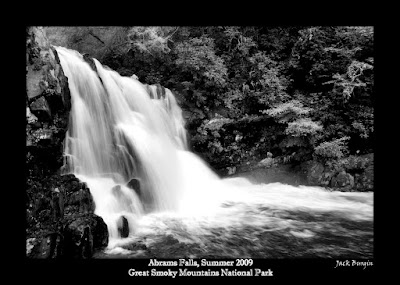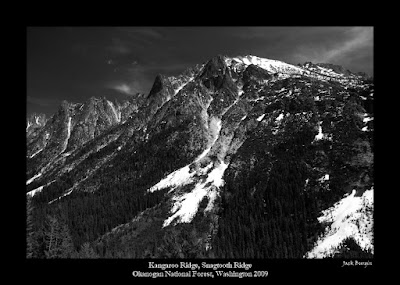
Jack Mountain lies east of the North Cascades National Park. This image, taken later in the day as the one of Kangaroo Ridge in the prior post, was actually taken from the Ross Lake National Recreation Area. Ross Lake lies on the eastern side of the North Cascades. Ross Lake and the North Cascades were created at the same time (
legally speaking) but is separate from the national park, presumably because there are several power generating facilities within Ross Lake (the
Skagit River Hydroelectric Project) which predated the creation of the national park and recreation area.
While Jack Mountain lies within the Mount Baker Snoqualmie National Forest, this view is from the Diablo Lake Overlook within Ross Lake. There are a number of overlooks/pullouts along the North Cascades Highway but this is the largest and has views of several peaks (those images will follow in later posts) and the deep green Diablo Lake.
We stopped at Diablo Lake Overlook twice, the first time, the sun was low enough on the horizon so that any photo of Jack Mountain from Diablo Lake included flares. Later in the day (around 3 to 3:30 pm) the sun had gone down in the west, not only eliminating the flares, but illuminating the mountain and the clouds above it. The view was striking.
The image was a digital color image, converted to black and white with a red filter bias to reduce the blues in the sky and to help bring out the contrast on the mountain. The contrast was increased to bring out the majesty of the moment.
For some reason, in working on this image, I was struck by how much digital cameras and software have changed photography. When I used to print black and white negatives, you had to purchase not only the chemicals but also the photography paper with different degrees of contrast. (I was never fond of variable contrast paper.) Today, the contrast adjustments are done with software, before printing the image (if the image is ever printed, so far this one hasn't been). In some ways, I miss the old development process, but I don't miss the hours spent alone in the darkroom, trying to figure out what contrast paper makes the image looks best.












